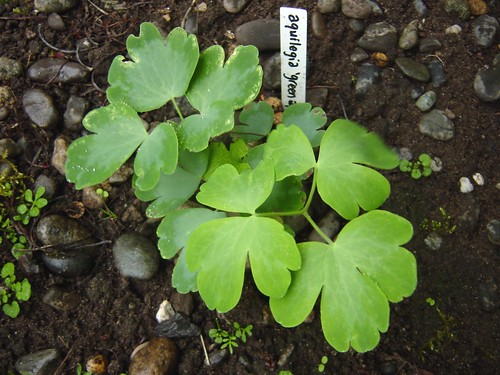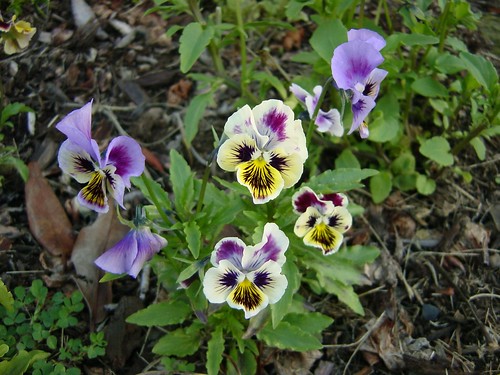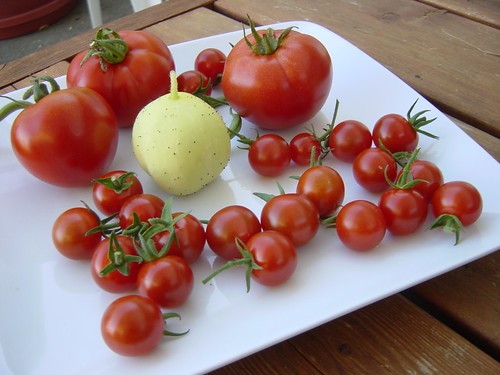
Columbine 'Green Apples'
Back in January, I winter sowed four packets of columbines. It was my second attempt at starting columbines from seed. An earlier half-hearted attempt had failed-- I had basically just scattered the seed in a shady area of the garden in mid-summer, and therefore hadn't been too surprised when nothing sprouted. Still, I felt I had nothing to lose by giving them a second shot using a different method-- especially since the seed was acquired on sale!
On the whole, the columbines did very well, allowing for my own mistakes. All four packets sprouted (two of those under adverse conditions that later killed the seedlings), but I'm happy with the resulting plants. They probably won't bloom until next year, but right now they're green and healthy and the foliage has its own woodland charm.
What I learned from the columbines: avoid using containers with precut slits. The two varieties that didn't make it had been planted in strawberry containers with long slits all along the sides. They had better depth than any of the other containers I used, but the slits caused them to dry out any time our cloud cover broke. Since underwatering is one of my famous gardening peccadillos, this proved fatal to my 'Nora Barlow' and 'Magpie' seedlings. I will try again next year while I enjoy 'Green Apples' (above) and my Rocky Mountain columbines. For reference, here's a photo of the Rocky Mountain seedlings back in April at Flickr.
This should be the last of my winter sowing updates for the year, so I'll close with a round-up, listed in order of germination time from shortest to longest:
Pansy 'Swiss Giants' mix - 24 days to germination
Pansy 'Super Chalon Giants' mix - 24 days to germination
Delphinium 'Blue Bird' - 39 days to germination
Larkspur 'Giant Imperial' mix - 39 days to germination
Columbine 'Green Apples' - 64 days to germination
Columbine 'Magpie' - 78 days to germination (bad container)
Columbine 'Nora Barlow' - 109 days to germination (bad container)
Rocky Mountain columbine - 64 days to germination
Hellebores - never germinated
Primroses - never germinated
I still have hopes for the hellebores, which have apparently been known to take over 365 days to germinate, and so I've been keeping that container watered. On the other hand, I've given up on the primroses. They're supposed to germinate within a reasonable time frame, which makes me worry for next year since I've purchased some P. auricula seed and would really like to see something come of it. I guess there's nothing to do but read up over the winter before giving it a shot.
So there you have it! I've been happy with my winter sowing project and will definitely use this method again next year. I have a new experimental setup in mind, which I plan to finalize over the fall and early winter, so expect to hear more on that front in January.



